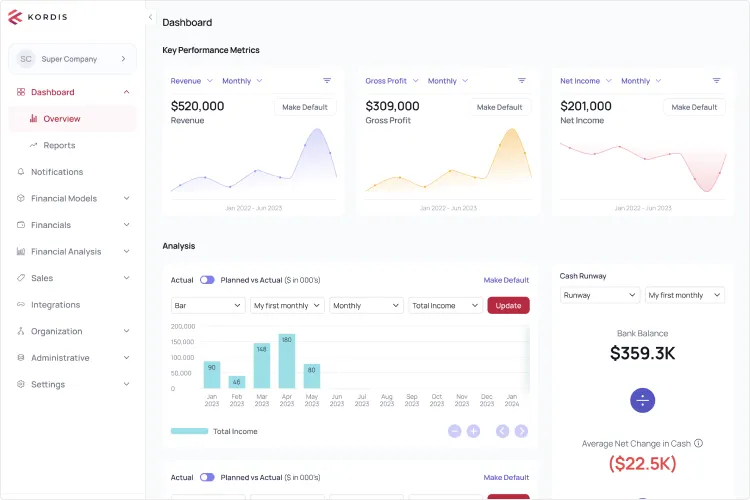In the bustling universe of financial planning, budgeting and forecasting are the superstars. The dynamic duo guiding businesses towards a prosperous future. Are you ready to understand the depth of this financial cosmos? Let's dive in!

Imagine planning a journey. You need a destination (goal), a roadmap (plan), a budget for your expenses, and a forecast of the potential challenges that may arise along the way. In essence, that's FP&A! It's the financial journey of a business, defining its goals, planning the route, setting a budget, and forecasting potential changes.
Planning is the process of defining your goals and setting a course to achieve them. But how do you fuel your journey? That's where budgeting comes in. It's about allocating your financial resources to reach your goals. And forecasting? It's your crystal ball, helping you anticipate future revenues and expenses based on historical financial data.
Planning is the process of defining your goals and setting a course to achieve them. But how do you fuel your journey? That's where budgeting comes in. It's about allocating your financial resources to reach your goals. And forecasting? It's your crystal ball, helping you anticipate future revenues and expenses based on historical financial data.
Implementing Planning, Budgeting, and Forecasting (FP&A) strategies is a crucial step towards ensuring the financial success of your business. By aligning your budgeting and forecasting processes with historical financial data, you can accurately predict future revenues, strategically allocate resources, and drive revenue growth. Utilizing the right budgeting and forecasting software enables you to make data-driven decisions, reduce errors, and rely heavily on accurate forecasts.
The FP&A process involves creating an annual budget planner that outlines the financial targets and expected performance for the fiscal year. By monitoring performance against actual financial statements and key performance indicators, you can make adjustments and reallocate resources as needed. Rolling forecasts are also used to adapt to changing market conditions and identify investment opportunities.
Finance leaders, along with department heads and management teams, play a crucial role in the budgeting and forecasting process. They ensure that budgets are allocated effectively and that the entire business operates within its financial plan. By considering market conditions, fixed costs, variable costs, and cash flows, financial resources can be managed efficiently.
To achieve organizational success, it is important to have accurate budgets, realistic financial forecasts, and effective resource allocation. This requires a strategic plan that takes into account potential risks, supply chain management, and investment opportunities. By relying on accurate financial information and utilizing software solutions, you can reduce errors, streamline manual processes, and address version control issues.
By implementing FP&A strategies, your business can make data-driven decisions, reduce costs, and improve financial control. It allows you to align your budgeting and forecasting processes with your business strategy, ensuring that your financial outcomes support your strategic goals. With accurate forecasting and budgeting, you can confidently navigate the ever-changing business landscape and drive your business towards success.
The power of FP&A lies in its capacity to guide your business strategy, shape your annual budget, and maintain financial control. It's a data-driven approach that requires a strong understanding of your business functions, financial statements, and the market conditions.

Remember, budgeting and forecasting is not just a finance department task. It's a strategic process that, when optimized, can guide your entire business to greater organizational success.
The future of FP&A is looking distinctly digital. AI and Machine Learning are poised to revolutionize the forecasting process, enabling businesses to predict future trends and potential risks with greater accuracy than ever before.
The world of FP&A is continually evolving, and staying ahead of the curve is no small feat. However, with strategic planning, accurate forecasting, and the right software tools, your business is well-equipped to navigate the fiscal year and beyond. Onwards and upwards!
AI and Machine Learning are the new sheriffs in town. These technologies are transforming the budgeting and forecasting process, enhancing the predictive value of historical data, and bringing a whole new level of accuracy to financial forecasting. Imagine being able to predict your future revenues with laser-sharp precision. Sounds like a dream? Well, this is reality with AI and ML. Buckle up! We're just getting started.
The future of budgeting and forecasting is not just about crunching numbers. It's about painting a picture of different scenarios and planning how your business would respond. Scenario-based planning enables finance leaders to create a realistic budget, taking into account a host of potential market conditions. What happens if there's a sudden surge in marketing expenses? Or if there's an unexpected reduction in supply chain costs? Scenario-based planning has got you covered.
Planning, budgeting, and forecasting software are no longer just for the finance department. Today's advanced solutions bring financial and operational planning together, acting as a bridge between different business functions. With this integration, your entire business can work towards strategic goals, using real-time financial information to guide decisions. Now that's what we call teamwork!
A breath of fresh air is blowing through the budgeting and forecasting process: cloud-based solutions. Gone are the days of manual processes, version control issues, and tables full of spreadsheets. With cloud-based budgeting and forecasting software, you can monitor performance, track key performance indicators, and adjust your financial plan in real-time.
The path to organizational success is paved with accurate forecasting, strategic planning, and effective resource allocation. Isn't it time your business took the plunge into this new age of financial control?
Lets embrace the future together. Book a call with one of our fractional CFOs.